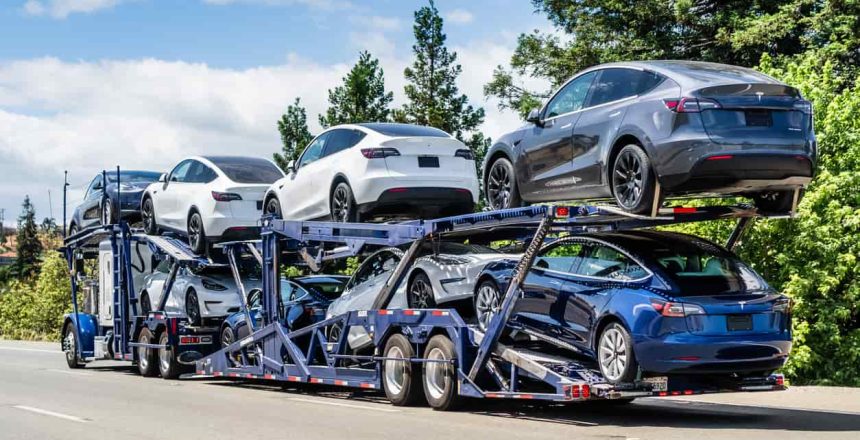First-time car shippers can have a hard time as shipping your car for the first time can be a nerve-wracking thought. Just 5 steps can make you more confident before signing up.
Key Takeaways:
- Researching potential carriers is critical to success
- Shippers must be flexible on delivery dates
- You have several shipping options with associated pros and cons
- Vehicle prep is an essential pre-transit step
- The more insurance you have, the safer your car will be
Taking that first step into the world of car transport is a big deal. It involves temporarily parting with a valued possession and trusting strangers to protect your investment. Knowing who you can rely on and what kind of protection you have if something goes wrong can be tough questions to answer. Our guide will break down the five main steps to cover all the vital bases.
1. Research the vendors
The big question for first-time shippers is “How do I know I can trust a carrier to ship my car?” A great way to start answering that is through the Federal Motor Carrier Safety Administration (FMCSA). This government-run database allows customers to input an auto carrier’s business name and verify two very important numbers: their USDOT and MC.
The first is their U.S. Department of Transportation history — a record of their conduct that can’t be erased or altered. The MC number is their Motor Carrier identification. This is what allows them to legitimately transport cargo within a state and across state lines. It’s a good sign if a carrier readily provides you with these two numbers. It’s a red flag if they don’t, or if they don’t match up on the FMSCA website.
Alternatively, first-time car shipping can be conducted through an auto broker. Good brokers will already have done all the necessary research on a carrier’s legitimacy, safety record, and other factors. They wouldn’t be on the broker’s books if they didn’t make the grade, so this can save first-time shippers a lot of time and worry.
2. Book in advance and prepare for schedule alterations
Car transport is smooth sailing under ideal circumstances and many times it goes without a hitch. Sometimes there can be a delay in the process caused by unexpected roadblocks, bad weather, or issues with other vehicles on the same rig as yours.
These blips can easily add a day or two onto the final delivery date; an addition that could leave you high and dry if you really need your car at Point B by a certain time. The lesson here is to ship your car comfortably in advance of when it’s going to be required. This gives your carrier wiggle room and provides you with the breathing space of a few flexible days. Just keep in mind that time of year can significantly affect your final bill.
3. Your various shipping options
Open, closed, or flatbed carriers are the three main types of shipping vehicles. Also, Open carriers offer single-level, dual-level, or heavy-duty options for weightier vehicles over shorter distances. Open shipping is the most popular, so there’s no shortage of carriers vying for your business. It’s also cheaper than enclosed carry. The drawbacks are longer waiting times, greater vehicle exposure to road risks like the elements and debris, and looser security against thieves or vandals.
Closed carriers protect against those drawbacks for a higher price tag. They come in multi-car, dual-car, and single-car varieties. Demand is lower for this more expensive option, which makes transport times slower because there are fewer on the road.
Flatbeds are typically used for heavier cars and provide carriers with the right skills to maneuver big loads (hopefully) without incident. Higher prices apply again here, and the heavier your car, the higher the fee.
4. Prepping your vehicle
Your vehicle needs to brace itself for the road just as much as you do. Start by giving your car a thorough cleaning. This isn’t to impress the carrier – it’s to help you notice any marks that may have been caused in shipping when it gets to the other side. A dirty car will often hide transit damage that won’t be revealed until the next cleaning when it will be practically impossible to blame the carrier.
You’ll need to have a spare car key ready to give the carrier (they’ll have a hard time doing their job without it). The carrier will also need your tank to have some gas in it. A good rule of thumb is having the tank quarter-full before transit. This should be sufficient for the on/off-boarding process and yet light enough to not weigh the car, and the carrier, down.
Next, remove anything else that may add extra weight to the vehicle, such as roof racks, running boards, custom grilles, etc. The lighter your car is, the less it will cost to ship. Remove any items from inside the car that aren’t strictly necessary to its function. This further lightens the load, protects the interior from being damaged by free-flying items, and protects your valuables from being broken or stolen on the road.
Lastly, take a lot of photos of your car’s interior and exterior. This is your backup against carrier claims that any damage or alteration to the vehicle wasn’t their fault. You really can’t overdo this step, so get as many images as you can and back them up by sending them to yourself via email, copying them to a removable device, or uploading them to the cloud.
5. Check for insurance
Any legitimate carrier will have insurance as part of their operations. A carrier’s auto transport coverage typically protects your car during onboarding, transit, and offboarding. Some carriers will offer more protection in this regard than others, so always ask about their limits and scrutinize insurance policies before signing.
Their payouts in the event of damage may be enough to cover you. The auto broker may even have insurance designed to protect you, too. However, if you’re shipping a car in the upper regions of value (financial, sentimental, or both) you may want to take out your own policy to further safeguard your vehicle. Talk to the provider of your standard auto insurance policy and ask how well you’re covered for shipping. Their advice will help you decide the next step.
Connect with Mercury Auto Transport before you ship
Mercury Auto Transport is a full-service auto shipping broker that connects customers with reliable carriers across America. We’re the ideal partner for first-time car transport because we keep our process transparent and our carriers are thoroughly vetted to root out unreliable vendors. Call us today to see how we can help!






